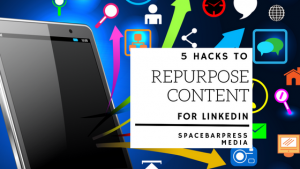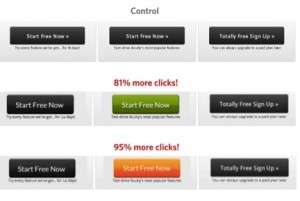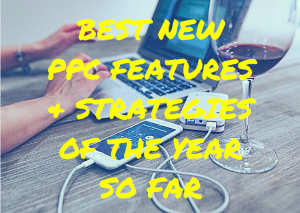
According to Ogilvy, the organic reach of content published by brands on Facebook is plummeting.
In an attempt to make feeds more relevant to their users, Facebook has prioritized content shared by friends and family. As social networks acquire more users and see more activity on their pages, organic reach is sure to continue its descent.
It is important for marketers to remember that social networks are search engines in their own right, and like Google, will continue to focus on providing their users with the most relevant content.
As a brand, how do you ensure that your content continues to reach your target audience, and a good percentage of them?
Relying solely on paid advertising is unlikely to get you the exposure or brand recognition that you are hoping for. Besides, the number of people using ad blockers in the US is expected to double by 2020.
Clearly, ad aversion is growing and realizing this, many large brands have begun to focus more on strong organic efforts to increase their exposure and complement their paid activities.
This post lists six smart ways to boost your social media reach organically.
1. Optimize your social profiles
Google’s crawlers use your Facebook page’s name, description, number of likes, and number of people talking about your page. Pages with keywords in their Facebook profile names rank over the biggest brands you can imagine.
For instance, if you search for “beer on Facebook”, none of the top brands show up.
Use the keyword in your page name to get your social pages to rank on Google.
If you’re targeting search on Facebook itself, observe that the platform page ranks your page if you list the keyword in your “Subcategory” in addition to having the word in your page name. So, brands that don’t have the word “beer” in their names also appear on search results.

On Twitter, don’t mention hashtags in your bio, or you’ll be directing people away from your page. You can use hashtags that your brand owns or dominates instead, or you can use the space to share an additional link to your blog.
In addition to social search optimization, ensure that you have the basics straight.
- Use your free social space to standout (profile/display images and username). You can demonstrate your expertise here to make your profile powerful.
- Provide a clear description of what you do, supported by links to additional references.
- Complete your information section and include keywords to describe products or services.
- Share keyword rich social media posts that are directed at helping people. Avoid being overtly promotional, and using words like “free” on your posts.
- Link back to the most relevant page of your website or blog where it makes sense.
- Use “high engagement keywords” to boost your engagement and in turn your search ranking.
2. Post the right content
Your content strategy should cater to your exact target audience. To do that, you need insights about who they are, what speaks to them and how they consume content.
If your audience consumes most content on mobile devices, you should ideally be creating mobile-friendly content that makes reading and sharing easy on mobile devices. Traffic analysis tools like Google Analytics and SimilarWeb can give you a sense of which devices your audience members are using.

To identify what type of content will engage your social media audience, you can use in-built monitors on each social platform – like Facebook insights and Twitter Analytics. The “interests” field will help you analyze your content strategy. You can also go by engagement on your posts or consult a social media analytics tool like Quintly or SumAll for help.
Additionally, you could also audit a competitor’s profile and identify the content that is working best for them.
3. Activate advocates
The more users interact with your posts, the more your organic reach is boosted on Facebook. You could kick-start your engagement with the support of brand advocates.
Anyone can be an advocate – a social fan, an employee or an influencer even. Some employee advocacy platforms even pull content from your social feeds and allow employees to like them in-app, making it easy for them to boost your social media engagement.

Additionally, you can activate advocates and encourage them to share your content each time you post. This requires relationship building and motivation from your end. You can also involve influencers in the process by creating and posting content that is likely to be of interest to them. Alternatively, you can invite them to participate in an interview series or a social media discussion.
4. Use supplementary platforms
You could look at external websites as platforms to earn content social media shares. Tons of marketers guest post to build their presence in an industry. You could request editors to allow “Tweet quotes” to drive more social media shares on your posts. This feature can be easily enabled using WordPress’ Better Click to Tweet plugin.

Alternatively, you can use distribution platforms to amplify your content on social media. BuzzFeed, DrumUp and Viral Content Bee are three great examples.
BuzzFeed – this site attracts about 150 million visits a month, and you can redirect a good part of that traffic to your page by making it to the first page of BuzzFeed. All you need is great content, inline with whatever is currently trending on the site.
DrumUp – this content discovery platform also allows you to promote your content. It uses the same algorithm that runs its content suggestions feature to “suggest” your content to people seeking it.
Viral Content Bee – this platform runs on a mutual benefit scheme that has other people share your content on social platforms in exchange for you sharing theirs.
5. Curate content
Overcrowding is one of the reasons why organic reach is declining on social platforms. It is also an indication of just how much content your audience is forced to consume on a daily basis. You could earn their support by behaving as a content curator for top content in your niche.
The objective is to curate content that is useful to your audience.
The benefits:
- Audience loyalty
- Social media authority
- Opportunity to build relationships
- Less promotional appearance
- More visibility
Facebook boosts posts of the authors you have had previous interactions with. Curation can help you establish that interaction with influencers by sharing their posts, so you can get on their radar. Similarly, Twitter connects you with people you @mention, and curation is a great way to make the most of this function.

6. Make it personal
We have already discussed how Facebook boosts your posts on the feeds of people you have interacted with. So interact with your fans. You should ideally do this anyway, because people are more receptive to your content when they have personally interacted with you previously.
Brands are also using personal communication as an opportunity for real-time marketing, to make a real impact on their audience. There are numerous instances of this, most of them customer care related.
You may have come across the Morton’s Steakhouse and Sainsbury examples.

Morton’s caught the tweet and had a porterhouse steak waiting for Peter Shankman in under three hours.
Brands are using social media listening tools to monitor smart keywords and find opportunities to build strong bonds with their audience. You can also use Twitter lists to monitor influential fans, so you can connect with them at exactly the right time and drive an invaluable positive impact for your brand.
Wrap up
If you are looking at social media solely as a content distribution platform, you are seriously limiting your marketing opportunities. Social media is now also a PR platform, a customer care outlet, an SEO factor, and has many undetectable effects on your overall brand presence. To make the most of them all, you have to keep an open mind and be observant. There are probably many more ways in which you can boost your organic reach.
Digital & Social Articles on Business 2 Community(33)





